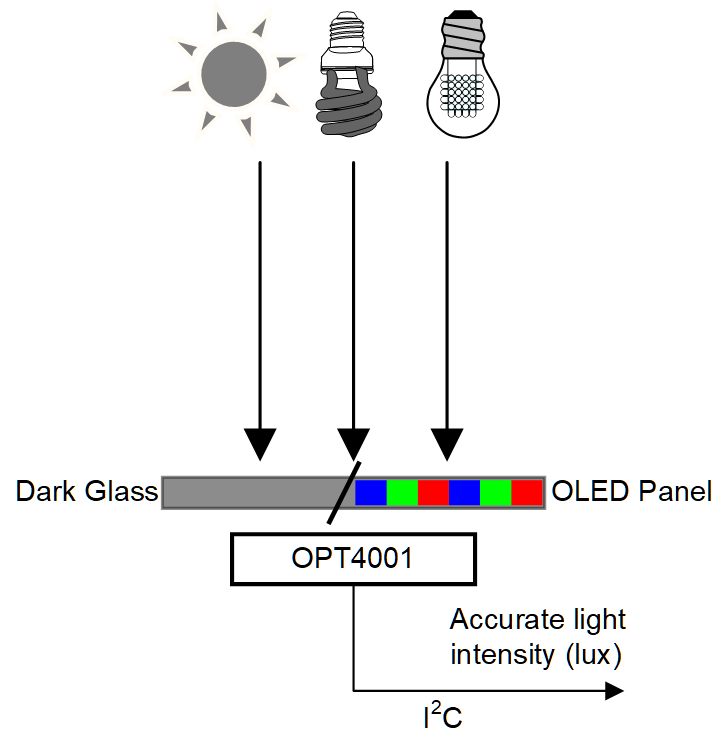JAJSNK9A December 2021 – December 2022 OPT4001
PRODUCTION DATA
- 1 特長
- 2 アプリケーション
- 3 概要
- 4 Revision History
- 5 概要 (続き)
- 6 Pin Configuration and Functions
- 7 Specifications
- 8 Detailed Description
- 9 Application and Implementation
- 10Device and Documentation Support
- 11Mechanical, Packaging, and Orderable Information
パッケージ・オプション
メカニカル・データ(パッケージ|ピン)
サーマルパッド・メカニカル・データ
発注情報
3 概要
OPT4001 は、可視光の強度を測定する光 / デジタル・センサ (シングルチップのルクス・メーター) です。このセンサのスペクトル応答は、人間の目の明所視応答によく合致しています。本デバイスは特別に設計されたフィルタにより、一般的な光源から近赤外線成分を除去し、正確な光の強度を測定します。OPT4001 の出力は、9 つのバイナリ対数フルスケール光レンジを持つ片対数であり、各レンジ内で非常に線形的な応答を実現しています。その結果、Picostar™ バリアントで 312.5μlux~83klux、SOT-5X3 バリアントで 437.5μlux~117klux を測定できます。この機能により、この光センサは、28 ビットの実効ダイナミック・レンジにわたって測定が可能です。自動フルスケール・レンジ選択ロジックが組み込まれているため、ユーザーは光のレベルごとに適切なゲイン設定を選択する必要がありません。
デバイス情報
| 部品番号 | パッケージ(1) | 本体サイズ (公称) |
|---|---|---|
| OPT4001 | PicoStar™ (4) | 0.84mm x 1.05mm x 0.226mm |
| SOT-5X3 (8) | 1.9mm x 2.1mm x 0.6mm |
(1) 利用可能なパッケージについては、データシートの末尾にあるパッケージ・オプションについての付録を参照してください。
スペクトル応答:OPT4001 と人間の目の比較
 OPT4001 の代表的なアプリケーション図
OPT4001 の代表的なアプリケーション図